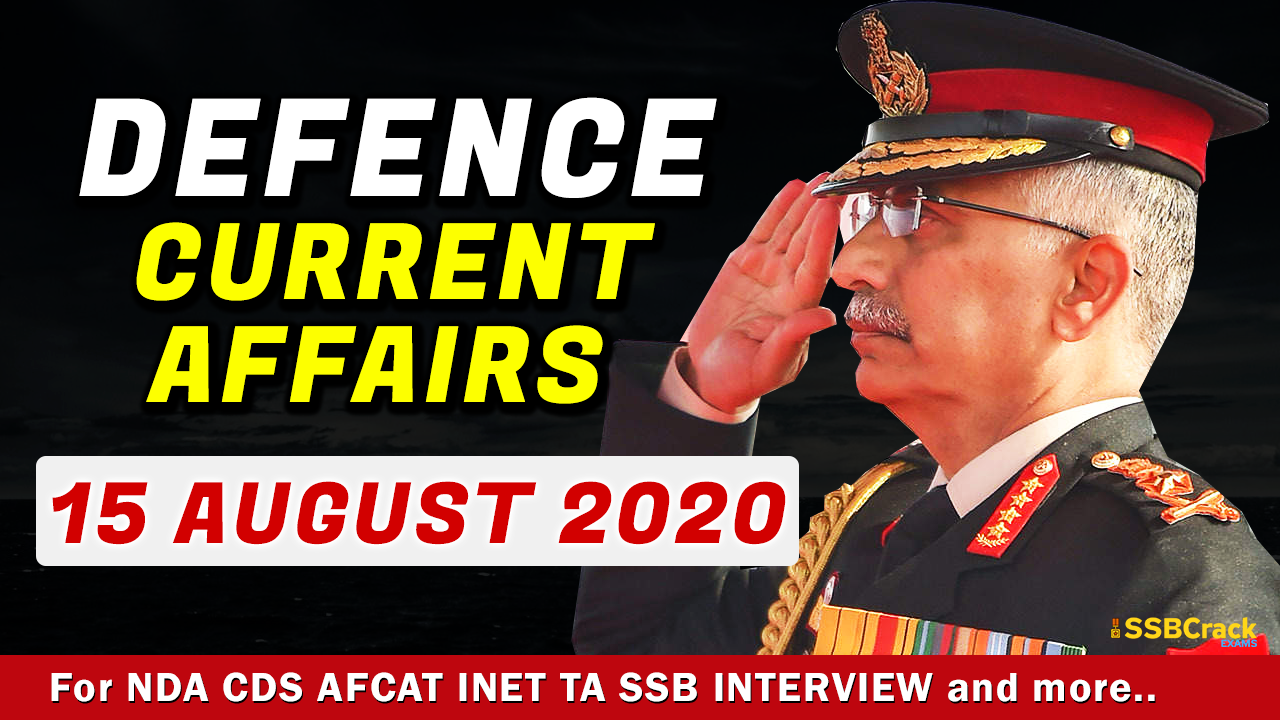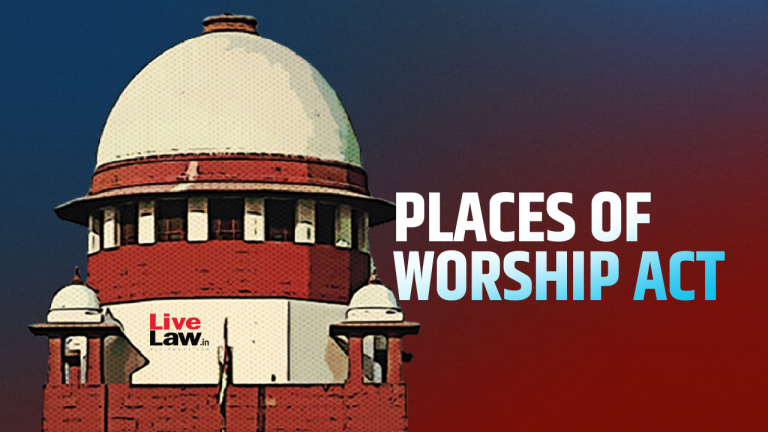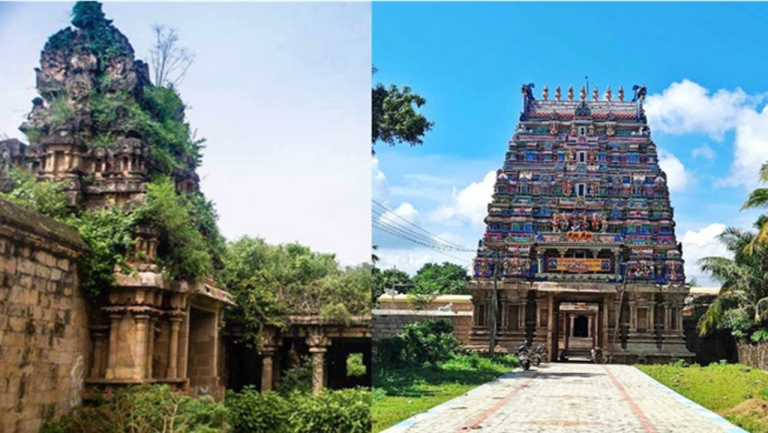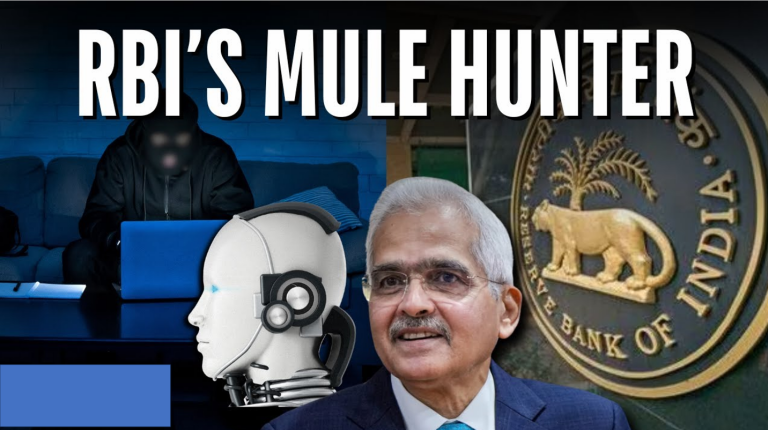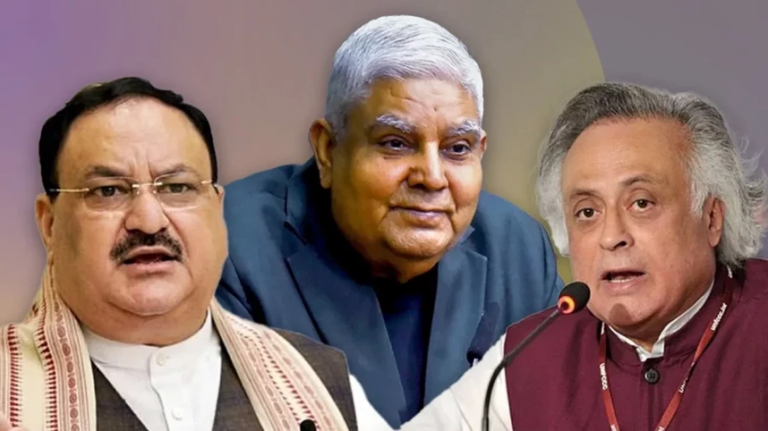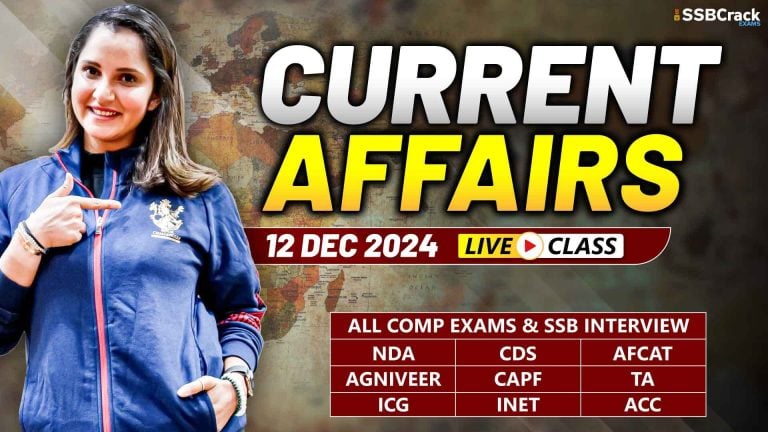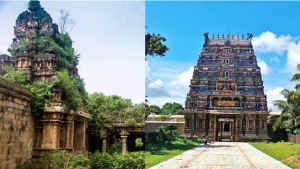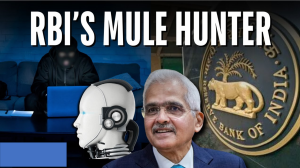Independence Day Celebrations 2020
- Prime Minister Shri Narendra Modi led the nation in celebrating the 74th Independence Day at the majestic Red Fort in Delhi. He unfurled the National Flag and delivered the customary Address to the Nation from the ramparts of the iconic monument.
- On his arrival at 0718 Hours in front of Lahore Gate of Red Fort, Shri Narendra Modi was received by the Raksha Mantri Shri Rajnath Singh and Defence Secretary Dr Ajay Kumar.
- The Defence Secretary introduced the General Officer Commanding (GoC), Delhi Area, Lieutenant Gen Vijay Kumar Mishra to the Prime Minister. The GoC Delhi Area then conducted the Prime Minister to the Saluting Base where a combined Inter-Services and Police Guards have presented general salute to Shri Narendra Modi. Thereafter, the Prime Minister inspected the Guard of Honour.
- The Guard of Honour contingent for the Prime Minister consisted of one officer and 24 men each from the Army, Navy, Air Force and Delhi Police. The Guard of Honour was positioned directly in front of the National Flag across the moat below the ramparts.
- This year, Army being the coordinating Service, the Guard of Honour was commanded by Lieutenant Colonel Gaurav S Yewalkar. Army Contingent in the Prime Minister’s Guard was commanded by Major Palvinder Grewal, the Navy contingent by Lieutenant Commander K V R Reddy, while Squadron Leader Vikas Kumar lead the Air Force contingent and the Delhi Police contingent by Additional Deputy Commissioner of Police Shri Jitender Kumar Meena.
- The Second battalion of Garhwal Rifles was raised on 01 March 1901 at Lansdowne under the able stewardship of Lieutenant Colonel JT Evatt. It is one of the finest battalions of Indian Army with a glorious and illustrious service history spanning more than a century. The battalion has won Eleven Battle Honours in World War I and World War II, which is splendid by any standards.
- Post-Independence, the battalion took active participation in the 1965 War. It got the opportunity to serve in Operation Rakshak from 1994 to 1996 and between 2005 and 2007. The battalion eliminated more than 80 terrorists.
- After inspecting the Guard of Honour, Prime Minister Shri Narendra Modi proceeded to the ramparts of the Red Fort where he was greeted by Raksha Mantri Shri Rajnath Singh, Chief of Defence Staff General Bipin Rawat, Chief of Army Staff General M M Naravane, Chief of Naval Staff Admiral Karambir Singh and Chief of Air Staff Air Chief Marshal R K S Bhadauria. The GoC Delhi area conducted the Prime Minister to the dais on the rampart to unfurl the National Flag.
- On unfurling the National Flag by Prime Minister Shri Narendra Modi, the National Guard gave ‘Rashtriya Salute’ to the National Flag. The Army Grenadiers Regimental Centre Military Band played the National Anthem during unfurling of the National Flag and the ‘Rashritya Salute’. All Service personnel in uniform stood & salute, the rest are requested to stand and give respect to the National Flag. The Band was commanded by Subedar Major Abdul Gani.
- Major Shweta Pandey assisted the Prime Minister in unfurling the National Flag. The unfurling of the tri-colour synchronised with the 21 Gun Salute fired by the valiant gunners of the elite 2233 Field Battery (Ceremonial). The ceremonial battery was commanded by Lieutenant Colonel Jitendra Singh Mehta and the Gun Position Officer will be Naib Subedar (AIG) Anil Chand.
- The National Flag Guard comprising 32 men and one officer each from the Army, Navy, Air Force and Delhi Police presented Rashtriya Salute at the time of unfurling of the National Flag by the Prime Minister. Major Surya Prakash from the Army was in command of this Inter-Services Guard and Police Guard. The Naval Contingent for the National Flag Guard was commanded by Lieutenant Commander Vivek Tingloo, Air Force contingent by Squadron Leader Mayank Abhishek and Delhi Police contingent by Additional Deputy Commissioner of Police Shri Sudhanshu Dhama.
- The Army contingent for the National Flag Guard was drawn from the 5th Battalion of the First Gorkha Rifles. The elite 5th Battalion of the First Gorkha Rifles was initially raised in January 1942 at Dharamshala and was later demobilised in December 1946. It was re-raised on 01 January 1965 at Solan (Himachal Pradesh). The battalion proved its mettle during ‘Operation Cactus Lity’ in East Pakistan in 1971 and was awarded with three Mahavir Chakras and two Vir Chakras for that. The Battalion also had an opportunity to serve for the United Nation Mission in Sudan from 2008 to 2009. The battalion is presently performing the honourable duty of Ceremonial Army Guard to the President of India.
- After unfurling the National Flag, the Prime Minister Shri Narendra Modi addressed the nation. After the speech of the Prime Minister is over, the National Cadet Corps cadets sang the National Anthem. All present were requested to stand at their seat and join the singing of the National Anthem. On this festival of national fervour, 500 NCC cadets (Army, Navy and Air Force) from different schools took part.
Gallantry Medals to Armed Forces Personnel on Independence Day
- Following gallantry awards have been conferred to Army personnel on the occasion of Independence Day-2020.
| Sl. No. | Award | No. | Remarks |
| 1. | Shaurya Chakra | 03 | |
| 2. | Bar to Sena Medal (Gallantry) | 05 | |
| 3. | Sena Medal (Gallantry) | 60 | Including 8 Posthumous |
| 4. | Mention-in-Despatches | 19 | Including 8 Posthumous |
Shaurya Chakra Recipients:
- 3003914X Havildar Alok Kumar Dubey – The Rajput Regiment 44th Battalion the Rashtriya Rifles
- IC-73334X Major Anil Urs – Maratha Light Infantry
- IC-68482Y Lieutenant Colonel Krishan Singh Rawat, Sena Medal – Parachute Regiment (Special Forces)
- Lt. Colonel Rawat was awarded the gallantry medal for leading his team into a 36-hour ambush of terrorists attempting to infiltrate. He gave specific positions for two terrorists resulting in their successful elimination. He also guided his team to safety from the retaliatory fire by the enemy and later located the remaining terrorists, eliminating two of them and grievously injuring others.
- Major Anil laid an ambush based on intelligence inputs of terrorists’ movement across the LOC and their plans to cross the LC to attack Indian military personnel. He led his team efficiently to bring down five terrorists despite receiving heavy fire from enemy troops. He is awarded the gallantry medal for “extraordinary leadership, nerves of steel and spirit of service before self.
- Havildar Alok is awarded for “display” of raw courage in preventing terrorists from breaking a security cordon laid by his team and killing one dreaded terrorist belonging to the A++ category while blocking others from escaping, enabling his team to further tighten the cordon and eliminate all other terrorists.
Navy to Urgently Buy 10 Ship-Based Drones
- Aiming to boost surveillance capabilities against enemy warships operating in the Indian Ocean region, the Indian Navy has moved a proposal to urgently acquire 10 shipborne drones which can keep a close eye on activities of the adversaries.
- “A proposal has been moved in fast track mode by the Indian Navy before the Defence Ministry under which it plans to buy 10 Naval Shipborne Unmanned Aerial Systems for over Rs 1,240 crores,” Government sources told.
- As per the plans of the Navy, the drones would be deployed on big size warships of the force and would help them in the detection of activities of the Chinese as well as other adversaries in and around Indian territorial waters, they said.
- As per plans, the Navy is likely to acquire these drones through an open bid and then deploy them on its warships for surveillance and reconnaissance activities.
- The Indian Navy is working separately on a project to acquire Sea Guardian drones from the United States for expanding its surveillance in the country’s areas of interest from Madagascar to Malacca Straits and beyond.
- The Navy is also getting its existing drones upgraded as part of an upgrade programme which was recently taken up for discussion in the Defence Ministry.
Indian Army recovers weapons, Pakistan currency during search operation in Jammu and Kashmir
- The Indian Army on Friday said that weapons, ammunition and Pakistan currency was recovered after a two-day-long search operation in Baramulla district of Jammu and Kashmir.
- Taking to micro-blogging site Twitter, the Chinar Corps said that the search operation was launched on August 11 based on inputs about the presence of weapon and ammunition cache, adding that the recoveries were made on August 13.
- In the Operation Trenarian (Dogi Pahad), three pistols with magazine and ammunition, 73 AK rounds, two detonators, 15 grenades and Pakistan currency was found, tweeted the Army.
- “Op Trenarian (Dogi Pahad), Baramulla. Search operation was launched on 11 Aug 20 based on inputs about presence of weapon/ ammunition cache. Recoveries made on 13 Aug 20 -3xPistols with magazine & ammunition, -73xAK rounds, -2xDetonator, -15xGrenades, -Pakistan currency,” tweeted the Chinar Corps.
Huge cache of arms, explosives seized in Assam ahead of Independence Day
- Huge cache of arms, ammunition and explosives were recovered in Assam’s Udalguri district ahead of the Independence Day, police said on Friday.
- Acting on a tip-off, the recoveries were made in a joint operation by the Guwahati Police and the Udalguri Police at several places of the district on Thursday night, they said. “These are suspected to belong to NDFB. Further investigation is on,” a police spokesperson said.
- The items recovered include two AK-47 rifles, five AK-56 rifles, two M-16 rifles, one air gun, seven 9mm pistols, 23 magazines (of AK series, LMG and INSAS guns), five 36 grenades, five HE bombs, and seven 40mm grenades.
- The police also recovered huge amounts of ammunition of different guns, including 166 rounds of 7.62 mm, 300 rounds of .303, and 790 rounds of 9 mm, the official stated.
- Besides, 200 detonator caps, 20 striker springs, and 20 kgs of explosives were also recovered during the operations, he added. Security has been further tightened across the state following the recoveries, police said.
- On January 27, the government had signed an accord with all the factions of the National Democratic Front of Boroland (NDFB), one of the dreaded insurgent groups of Assam, All Bodo Students Union and United Bodo People’s Organisation, providing political and economic bonanza to the Bodoland region.
- Following this, 1,615 cadres of all the factions of NDFB laid down their arms on January 30. However, there were allegations that the banned militant group did not deposit all of its arms.
BEML teams up with IIT-Kanpur for pilotless aircraft & unmanned aerial vehicles
- Bengaluru-headquartered BEML said on Friday it would collaborate with IIT-Kanpur for joint indigenous development of pilotless target aircraft (PTA) and tactical unmanned aerial vehicles (UAVs).
- Both the organisations would synergise respective capabilities and undertake feasibility study, design and development, testing and validation of tactical UAVs and PTA, BEML said in a statement.
- “The jointly developed products will substitute the currently imported UAVs and PTA and aims to achieve self- reliance at a reduced cost,” it said.
- This, it said, would also help foster innovation and technology development in defence and aerospace by engaging various industries, including MSMEs, start-ups, individual innovators, R&D institutes, and academia.
- “This will enable BEML achieve a quantum jump in defence and aerospace business and provide a big thrust in ‘Atmanirbharta’ in the defence sector. The potential customers will constitute the armed forces, paramilitary and civilian,” the statement said.
- Also, BEML announced that it is teaming up with NASSCOM CoE (Centre of Excellence) for artificial intelligence (AI) and Internet of Things (IoT)-related areas.
- This tie-up aims at technical support for implementation of AI and IoT in BEML products and to set up incubation centre for start-ups, it stated.
- BEML’s MoUs with IIT-Kanpur and NASSCOM were signed in the virtual presence of Defence Minister Rajnath Singh and Chief of Defence Staff General Bipin Rawat, among others, the statement added.
Important Battle Tanks of India
(Independence Day Special Coverage)
Arjun MBT
- Main Battle Tank (MBT) Arjun is a multi-laboratory programme of DRDO with CVRDE as the lead Laboratory. It is a state-of-the-art tank with superior fire power, high mobility, and excellent protection. Twelve Mk 1 prototypes of MBT Arjun have been manufactured and their performance tests have provided satisfactory results. Some of the breakthroughs achieved by CVRDE during the development of MBT Arjun are in Engine, Transmission, Hydropneumatic Suspension, Hull and Turret, and Gun Control System.
Fire Power
- Accurate and fast target acquisition capability during day and night and in all types of weather .
- Shortest possible reaction time during combat engagements .
- Ability to accurately engage targets on move .
- Capability to destroy all possible enemy armour at maximum battle ranges
- Excellent first hit probability
Main Armament
- Secondary Armament
- Gunner’s Main Sight
- Panoramic Sight for Commander
- Ammunition
Mobility
- High performance engine
- Robust and effective transmission system particularly flexible hydropneumatic suspension .
- Optimized running gear with its high shock energy absorption.
Protection
- The computerised design and simulation .
- A fabricated turret housing lightweight compact KANCHAN armour.
- Careful dimensioning of wall through optimal slopes and angles .
- A low silhouette.
Crew Comfort
- Ergonometry, using anthropometric data of Indian troops, has been kept in view while designing the fighting and driving compartments to fully exploit the outstanding features of the weapon system. Hydropneumatic suspension provides excellent ride comfort for crew eliminating fatigue even on the extended runs.
Dimensions
- Overall length {with gun forward) : 10.638 m
- Overall height {with gun rear) : 9.546 m
- Overall height {with AD gun mount) : 3.03 m(Turret roof: 2.32 m)
- Overall width : 3.864 m
- Combat weight : 58.5 tons
Technical Characteristics
- Max speed : 70 km/hr
- Max speed on cross country : 40 km/hr
- Ground pressure : 0.84 kg/sq. cm.
- Engine power : 1400 HP at 2400 rpm
- Engine characteristics: V 90° Turbo charged diesel, 10 cylinder water cooled
- Power-to-weight ratio :24:1 HP/ton
- Gear box : 4 fwd +2 rev gears Epicyclic gear train, Torque converter, Mech lockup clutch & hydrodynamic retARDEr
- Steering : Double radii, mechancial steering with neutral turn
- Suspension : Hydrogas
- Shallow fording: 1.4 m
- Vertical obstacle : 0.914 m
- Trench crossing : 2.43 m
- Gradient : 35 deg
- Gun : 120 mm rifled
- Rate of fire : 6-8 rounds per minute
- Ammunition : 39 rounds (FSAPDS/HESH)
- Co-axial machine gun : Mag 7.62 mm Tk 715 A
- Anti aircraft machine gun : HCB 12.7 mm
- Fire control system : Director type
- Gun control system : Electro-hydraulic
- Night vision : Thermal imaging
- Ballistic computer : Digital
- Crew : 4 (Cmdr, Gnr, Ldr. Dvr)
T-90 Bhishma Tank
- The T-90 is a Russian third generation main battle tank. It is the latest development in the T-series of Russian tanks and represents an increase in firepower, mobility and protection. It is manufactured by Uralvagonzavod in Nizhnyi Tagil, Russia. The T-90S entered service with the Russian Army in 1992.
- In February 2001, the Indian Army signed a contract for 310 T-90S tanks: 124 were completed in Russia and the rest are being delivered in “knocked down” form for final assembly in India. Currently India operates more than 862 T-90S which were produced in three separate orders.
- It is currently the most modern tank in service with the Indian Ground Forces. T-90 uses a 125mm 2A46 smooth bore tank gun, 1G46 gunner sights, a new engine, and thermal sights. In all, India plans to have 310 T-90S and 1,330 T-90M tanks in service by 2020 (total of 1,657 tanks by 2020).
- T-90S tank is 9.63m long ,3.73 m wide and 2.22 m high. It weighs around 46 tonnes. The tank is fed by automatic loader which removes the need for a manual loader in the tank and reduces the crew to 3 which includes commander, gunner and driver.
- It
weighs just 48 tons and has a crew of 3 which is made possible by the use of an
autoloader for the 125 mm smoothbore gun. The unique feature of this tank is
its ability to fire the Invar anti-tank missile from its barrel. The other
special feature is that, even though the 12.7 mm machine gun mounted on the
turret is manually operated, it can also be remotely controlled from inside the
turret by the commander. The Indian variants have indigenous Kanchan ceramic
armour which is topped by a layer of Explosive Reactive Armour (ERA). It is
powered by a diesel engine which makes maintenance easier and reduces fuel
consumption compared to the gas turbines of the T-80.
Kanchan Armour
- KANCHAN ARMOUR is the name referred to the MODULAR COMPOSITE ARMOUR indigenously developed by INDIA to be used for mainly Arjun and its other Tanks. The Kanchan Armour got its name from Kanchan Bagh where the Defence Metallurgical Research Lab (DMRL) is located. Most of the information about the armour is classified but we cumulated some information from DRDO sources as follows:-
- The Armour is said to be made by sandwiched Composite Plates between ROLLED HOMOGENEOUS ARMOUR (RHA).
- The armour is able to defeat APDA & HEAT rounds.
- The armour can readily withstand APFSDS round.
- The Armour has till yet defeated all available HESH & FSAAPDS rounds, including Israeli rounds.
- The armour composes of Ceramic, Aumina, Fiberglass and other such materials.
- During 1980s, Kanchan defeated 106mm RCL gun which was to be tested on ARJUN.
- KANCHAN WITHSTOOD A HIT FROM T-72 AT POINT BLANK RANGE.
T-90S Bhishma Armaments
- The T-90S armament includes one 125mm 2A46M smoothbore gun, stabilised in two axes and fitted with a thermal sleeve. The gun tube can be replaced without dismantling inside the turret. The gun can fire a variety of ammunition including APFSDS (Armour Piercing Fin-Stabilised Discarding Sabot), HEAT (high-explosive anti-tank), HE-FRAG (high-explosive fragmentation) as well as shrapnel projectiles with time fuses.
- The T-90S gun can also fire the 9M119 Refleks (NATO designation AT-11 Sniper) anti-tank guided missile system. The range of the missile is 100m to 4,000m and takes 11.7 sec to reach maximum range. The system is intended to engage tanks fitted with ERA (explosive reactive armour) as well as low-flying air targets such as helicopters, at a range of up to 5km. The missile system fires either the 9M119 or 9M119M missiles which have semi-automatic laser beamriding guidance and a hollow charge warhead. Missile weight is 23.4kg. The guns automatic loader will feed both ordnance and missiles.
Fire Control System and Observation
- The T-90S has the 1A4GT integrated fire control system (IFCS) which is automatic but with manual override for the commander. The IFCS contains the gunner’s 1A43 day fire control system, gunner’s TO1-KO1 thermal imaging sight which has a target identification range of 1.2km to 1.5km and commander’s PNK-S sight.
- The gunner’s 1A43 day FCS comprises: 1G46 day sight / rangefinder with missile guidance channel, 2E42-4 armament stabiliser, 1V528 ballistic computer and DVE-BS wind gauge.The commander’s PNK-4S sight includes a TKN-4S (Agat-S) day / night sight which has identification ranges of 800m (day) and 700m (night).
- The driver is equipped with a TVN-5 infrared night viewer.
Mobility/Propulsion
- The T-90s Bhishma is powered by liquid cooled V-84MS 618kW (840hp) four stroke V-12 piston engine. This engine can be fuelled by T-2 or TS-1 kerosene and A-72 benzine, in addition to diesel. The tank can carry up to 1,600 litres of fuel in the main fuel tanks and fuel drums. The fuel tanks are reinforced with armour plating.
- The T-90S with uprated 1000hp engine can attain a top speed of 60km/h on the road and 45 km/h on rough terrain. The tank has typical drive-train arrangement with engine rear placed and transmission includes primary reduction gear, two planetary final gearboxes and two planetary final drives. The running gear features torsion bar suspension with hydraulic shock absorbers at one, two and six road wheel stations and tracks with rubber-metallic pin hinges.
- The tank is provided with a snorkel for deep fording and can ford 5m of water with equipment which can be deployed in 20 minutes. The tank is also fitted with air conditioning system for work in high temperature zones.
UPGRADE
- According to latest media reports, India plans to upgrade Russian made T-90 tanks with latest technologies to keep it modern and fighting fit for next decade, Indian authorities have already had a meeting with makers of the tank in Russia recently and are planning on list of key technologies which will be part of the major upgrades planned by India.
- Russia had showcased T-90MS upgraded tank in last defence expo and were keen to sale it to India, but India will be working in incorporating some local technologies in tank along with some Russian equipment s and are not interested in purchasing upgraded tank offered by Russia.
- Major upgrades to the tanks planned is Automatic Target tracker which once locked will track the target in auto mode with full 360-degree coverage without inputs from gunner; another upgrade planned will be see improved Thermal Imager for better Night Fighting capability. Most of the upgrades planned with enhance tanks fighting in modern warfare.
T-72 Ajeya Battle Tank
- The Indian T-72 Ajeya Tank is a licence manufactured Russian T-72M1, which started in the late 1970’s. It’s believed some 1700 have been delivered to the Indian Army. During the 1990’s, as the Arjun (Mk I) development dragged on, hundreds of T-72M1’s (named Ajeya) were in need overhauling and repairing, an opportunity normally capitalised upon to implement upgrades.
- India has been working on a long-term upgrade program of its Ajeya in stages. The first stage true upgrade has been called the “Combat Improved Ajeya”.
- In 2002, India purchased 250 Polish SKO-1T Fire Control Systems as used on the PT-91 and has thermal imaging sight. Its reported that India was unable to secure the rights to manufacture the FCS under licence. CI Ajeya also has new ERA developed by DRDO (Defence Research & Development Organisation), fire detection & suppression system within the crew compartment, new 81mm smoke grenade launchers mounted on the side of the turret and GPS.
- During a mid-2011 press release, India defence spokesman stated that 250 vehicles had so far been upgraded to the CI Ajeya.
- During the time of the press release, further field trials, with the help of a team of Russian scientists, were being conducted at the Jaisalmer’s Lathi Field Firing Range on a T-72. No details of what was being tested were given.
Sarath BMP-II IFV
- It is the best infantry combat vehicles in the world with modern weapon systems. It is ideal for fighting battles with speed, surprise and deadly precision.
- Mobility: Powered by 300 HP Engine, it is a highly mobile to meet all tactical requirements of mobility in a battlefield, travels at an incredible 65 KMPH, with easy steering ability in cross country terrain.
- SARATH BMP-II is a truly amphibian vehicle which can travel at 7 KMPH on water and can over-come slopes upto 35 degree and can cross obstacles of 0.7 M. It can be easily transported by air due to its low weight.
- Protection: It is protected with armoured plates all around there by ensuring a high degree of protection to the combatants. It offers a chameleon like camouflage with the help of smoke grenades creating a smoke screen.
- Fire Power: Equipped with a rapid fire 7.62 MM medium coaxial machine gun, a 30 MM cannon and a second-generation homing type anti-tank guided missile, the SARATH BMP-II can neutralise all kinds of land based and low flying military objects.
- Night Vision: Provided with sharp night vision devices and a low silhouette, SARATH BMP-II is a dream come true for an infantry Man in the battlefield.
Abhay IFV
- The Abhay is currently serving as a developmental vehicle program designed to test out various technologies, mechanics and weaponry for their use in a future Indian Army Infantry Combat Vehicle (ICV) which itself will someday replace the aging Soviet-era BMP-2 fighting vehicles currently in service with the Indian Army. Design of the Abhay is being handled by the Defense Research and Development Organization (DRDO) of New Delhi with production of several known prototypes being handled by the Heavy Industries Factory of Avadi. The name “Abhay” translates to “Fearless” in Sanskrit.
- Origins of the Abhay lay in a new Indian armoured vehicle initiative begun in the latter part of the 1990s. India had long been supplied with military equipment from the Soviet Union and Russia and has since grown their indigenous defense industry to become a major global player in the realm of small arms, aircraft (including helicopters) and military vehicles.
- The Abhay underwent work throughout the decade and its design was largely based on the BMP series of vehicles. The BMP was a Soviet-era design that evolved into three major successful variants and would have played a major role in Europe should the Cold War had gone “hot”.
- India operated the BMP in some numbers prior and had garnered significant experience in their operation, maintenance and capabilities. Coupling the best qualities of that machine with the best available technologies originating from the West, the Abhay was born as an indigenous attempt to vastly upgrade the existing BMP fleet.
- Trials involving the Abhay began in 2000 with major manufacture of needed components underway by 2004.
- Delays were encountered through the US-sponsored sanctions related to the 1998 nuclear tests at the Pokhran test range so indigenous avenues were fully explored and ultimately instituted into the development of the Abhay – in effect making the Indian defense industry ever-more self-sufficient.
- The Abhay is classified as an “Infantry Combat Vehicle”, a military vehicle class located somewhere between an Armoured Personnel Carrier (APC) and Main Battle Tank (MBT). Unlike armoured personnel carriers, ICVs fit offensive-minded firepower greater than that of general-purpose machine guns though are overly armed with less capabilities that that of main battle tanks and their powerful main guns.
- The automatic self-loading cannon is usually the weapon of choice for such systems and this can be backed by the use of anti-tank missile launchers as well as grenade launchers and heavy machine guns. ICVs vehicles allow for the safe transport of a combat-ready infantry force while supplying their own fire support in a given engagement.
- Upon releasing their passengers – usually from rear-fitted doors or powered ramps – the infantry combat vehicle can then take part in a given battle by utilizing its collection of weaponry.
- The Israeli Merkava Main Battle Tank is somewhat unique in its role as a combat tank in that it can also house infantry within its rear-mounted fighting compartment thanks to its front-mounted engine arrangement.
- Externally, the Abhay’s design shares many similarities to the Soviet BMP series, of which the Indian Army has much experience with. The vehicle sports six double-wheeled road wheels to a track side with the drive sprocket at the front of the hull and the track idler at the rear.
- The vehicle is suspended by an indigenously designed hydro-pneumatic suspension system allowing for good cross-country performance. The upper portions of the track are covered over inside skirt Armor for some limited protection.
- The glacis plate is gently sloped upwards towards the hull roof line and meets at a point at the forward hull, similar to the BMP. The hull sides are slightly sloped inwards towards the hull roof line. The turret is fitted atop the hull roof and slightly set to the rear of the vehicle.
- There is access to the passenger cabin through the rear facing.
- The turret features full 360-degree traversal and is given sloped sides for basic ballistics protection. The main gun protrudes from the front facing and is capped by a conical muzzle brake. Armor, at this point in development, features a mix of composites, titanium, and hardened steel armour for maximum effectiveness within the given weight requirement. Overall, the Abhay is similar in form and function to existing infantry fighting vehicles currently in service worldwide.
- The operational crew will consist of three standard personnel made up of the driver, commander and gunner. There will be a compartment for up to seven combat-ready troops with a rear-fitted access door.
- The occupants will be protected by armour (known by the name of “Kanchan”) known to be similar to the armour showcased in the Arjun Main Battle Tank of the Indian Army. As with most operational IFVs today, Explosive Reactive Armor (ERA) will be optional and available for the Abhay for additional point defense. Six smoke grenade dischargers are available (in banks of three per turret side according to available imagery) for self-defence or to create tactical smoke screens.
- NBC (Nuclear, Biological, Chemical) protection will be standard and integrated laser warning receivers will alert the operating crew as necessary.
- Primary armament of the Abhay centres around a turret-mounted Bofors 40mm L70 high-velocity autocannon system. The turret is electrically driven and allows for a full 360-degree traversal. Ammunition types will include APFSDS and High-Explosive (HE) versions to help deal with both “hard” and “soft” targets as required.
- Some 210 projectiles of 40mm ammunition will be available. The crew will be assisted by the integrated Fire Control System (FCS) as well as thermal sights. Another potent offensive addition to the Abhay design will be its inclusion of anti-tank missile launchers for defeating the armor of enemy main battle tanks. It is believed that two such launchers will be available to the crew with possibly four missile reloads aboard.
- Secondary armament will be the installation of a 30mm Automatic Grenade Launcher (AGL) in the turret. This will be further backed by a coaxial 7.62mm PKT series general purpose machine gun. Both of these armament options will help to combat enemy infantry concentrations – dislodging such foes with fragmentation grenades or suppressing their movement with the machine gun.
- Power for the Abhay is provided by a Greaves Cotton TD2V8 series diesel-fueled engine, developing up to 550 horsepower output. This supplies the IFV a top speed of 70 kilometers per hour on road and up to 35 kilometers off road.
- Operational range is listed at 400 kilometers. The powerplant is coupled to an L-3 Communications brand automatic transmission system. There is some limited amphibious capability allowing the Abhay to cross rivers and streams under its own power. Propulsion will most likely be accomplished by the motion of its own tracks as opposed to a dedicated propeller system
REVIEW QUESTIONS
- General Officer Commanding (GoC), Delhi Area:
- Major General R K Singh
- Lieutenant General Vijay Kumar Mishra
- Lieutenant General Anil Chauhan
- Lieutenant General P N Rao
ANSWER: B
- This year, the Guard of Honour was commanded by
- Lieutenant Colonel Gaurav S Yewalkar
- Major Palvinder Grewal
- Lieutenant Commander K V R Reddy
- Squadron Leader Vikas Kumar
ANSWER: A
- Who assisted the Prime Minister in unfurling the National Flag?
- Major Palvinder Grewal
- Lieutenant Colonel Gaurav S Yewalkar
- Squadron Leader Vikas Kumar
- Major Shweta Pandey
ANSWER: D
- Which PSU would collaborate with IIT-Kanpur for joint indigenous development of pilotless target aircraft (PTA) and tactical unmanned aerial vehicles (UAVs)?
- BHEL
- DRDO
- BEL
- BEML
ANSWER: D
- ____ is the name referred to the Modular Composite Armour indigenously developed by India to be used for mainly Arjun and its other Tanks.
- Vidyut
- Sarath
- Kanchan
- Kavach
ANSWER: C

